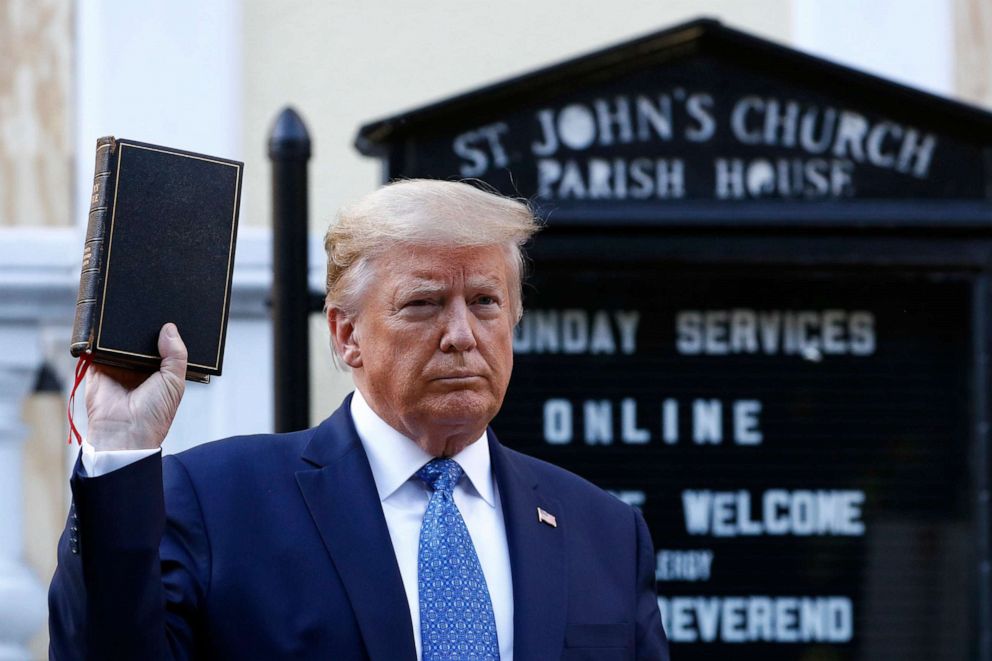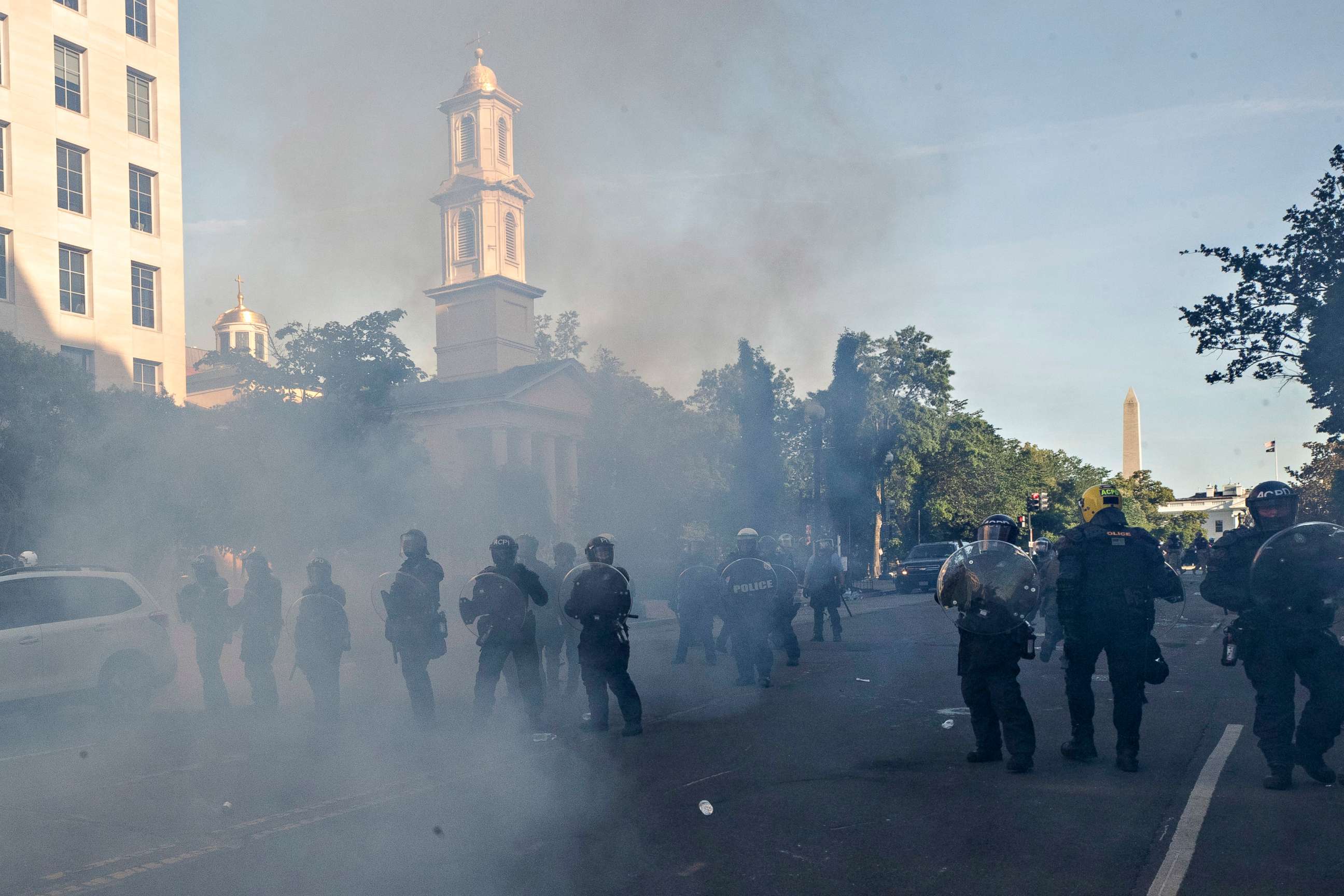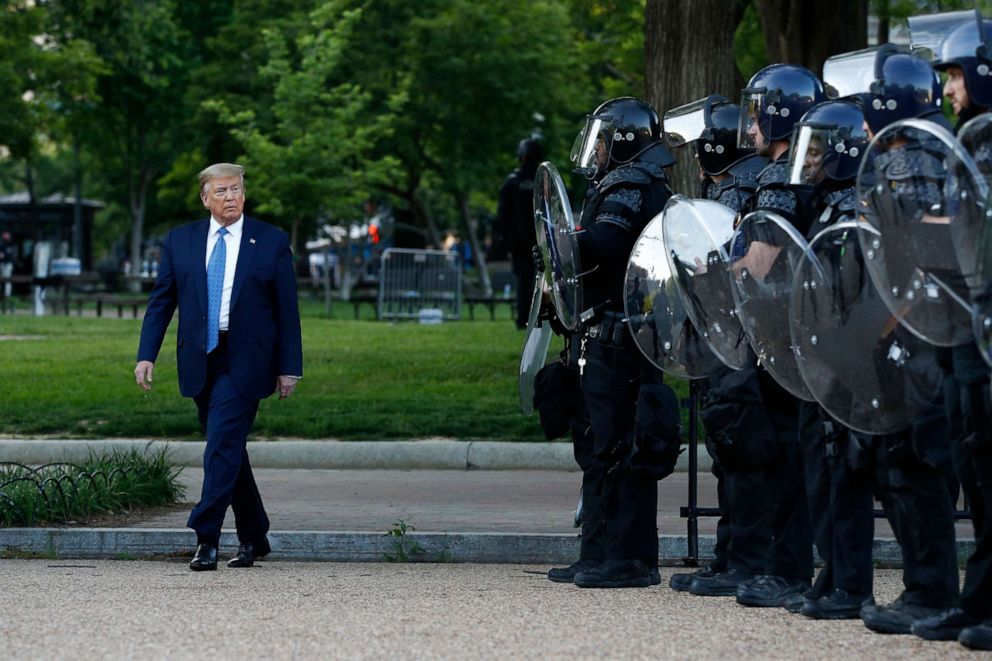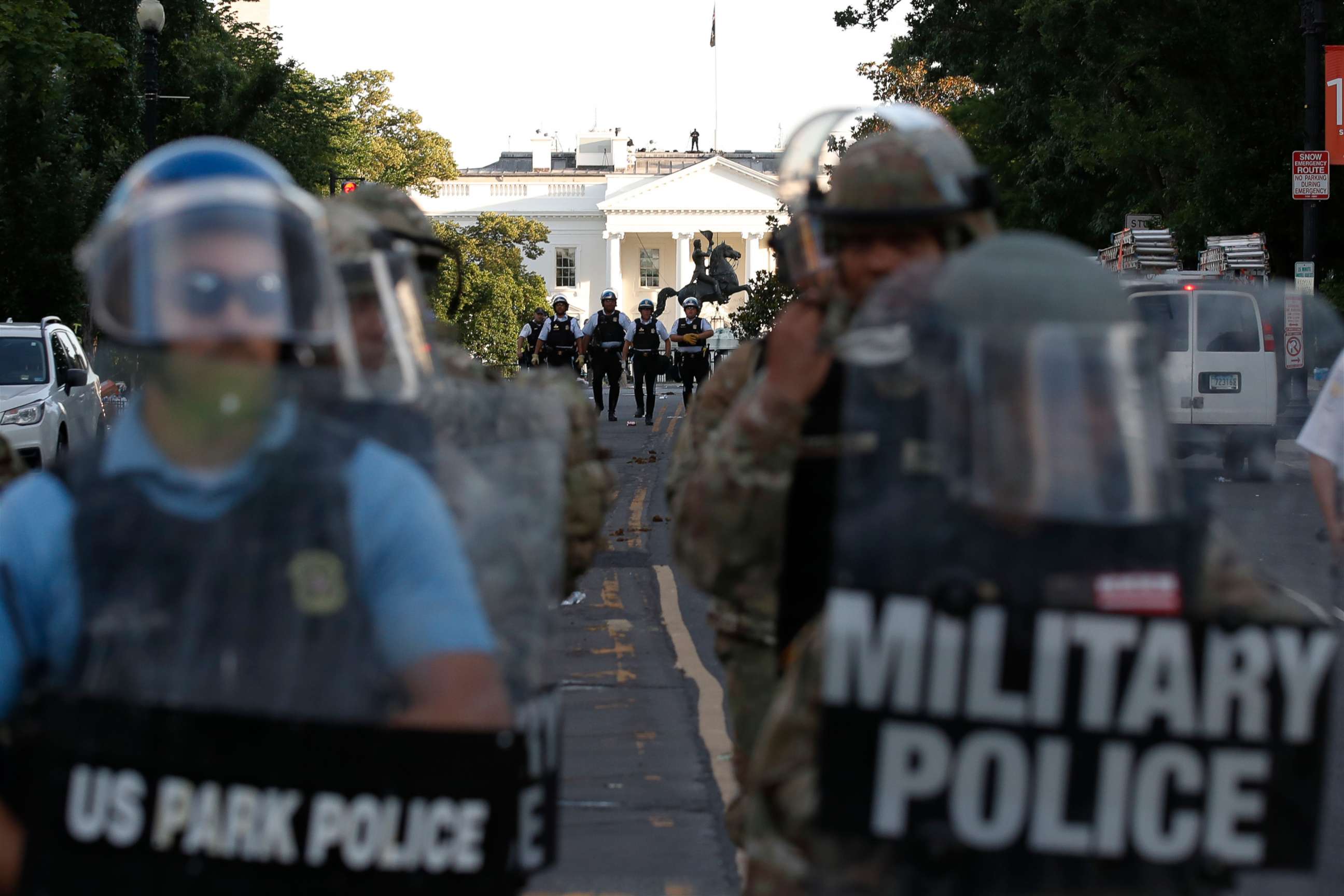National Guard officer challenges Trump administration account of White House protest crackdown
The officer said "excessive" force was aimed at peaceful protesters.
A National Guard officer appeared before Congress on Tuesday to challenge the Trump administration's story behind the decision to force protesters out of a park near the White House last month.
Adam DeMarco, an Iraq war veteran and a major in the D.C. National Guard, was responsible for coordinating the guard's support of U.S. Park Police during a June 1 protest against police brutality at Lafayette Park.

DeMarco described the demonstrators as largely peaceful and said they faced an "excessive use of force" at the hands of federal police the guardsmen were tasked to support.
"It was my observation that the use of force against demonstrators in the clearing operation was an unnecessary escalation of the use of force," DeMarco said. "From my observation, those demonstrators, our fellow American citizens, were engaged in the peaceful expression of their First Amendment rights."
DeMarco said he could hardly hear the warnings for people to leave the park from his position north of the White House, and said there was "no indication" protesters knew they were required to leave.

Attorney General William Barr orchestrated the clearing of the park just before President Donald Trump walked through the area for a photo op at a nearby church, as ABC News previously reported. Barr later said expanding the security perimeter was already planned when he found out the president intended to walk over.
The administration has denied that tear gas was used on the demonstrators. But DeMarco directly refuted the claim in his testimony, saying the irritation in his eyes and nose reminded him of the gas he was trained by the military to detect. He said he later found spent tear gas canisters on the street near the park.
"Members of the Committee, the events I witnessed at Lafayette Square on the evening of June 1 were deeply disturbing to me, and to fellow National Guardsmen," DeMarco said.

U.S. Park Police Acting Chief Gregory Monahan defended the federal law enforcement response before the committee on Tuesday. Monahan said prior acts of violence in the D.C. crowd were "context" for the decision to set up the barricade.
He said 50 other officers were injured at protests over the weekend leading up to June 1. One officer was hit in the head with a brick, he said, showing the officer's damaged helmet to the committee members. Another officer was struck by a brick in the groin, Monahan said. That officer had returned to work last week.
Only one officer was injured the day the barricade went up. Monahan said that officer was hit in the face by a protester after the crowd was ordered to disperse.
"I think based on the level of violence and sustained violence that we saw ... this was one of the most violent protests that I've been a part of in my 23 years with the United States Park Police," Monahan said.
Monahan has maintained that clearing the park at the time was necessary to set up a security barricade around the White House and that moving the protesters out of the park was done "once the fencing arrived."

The appearances before Congress follow months of protests across the country aimed at calling attention to systemic racism in law enforcement. While the demonstrations have been largely peaceful, some have turned violent.
Democrats and civil liberties advocates blame the administration for escalating confrontations between law enforcement and protesters in recent months. Trump has threatened to deploy additional forces to target crime and protect federal property.
Clashes between demonstrators and federal law enforcement in Portland, Oregon, ignited a weeks-long feud between the administration and local officials, with the City Council taking action earlier this month to prevent cooperation between local cops and federal agents.
ABC News' Ben Siegel contributed to this report.




